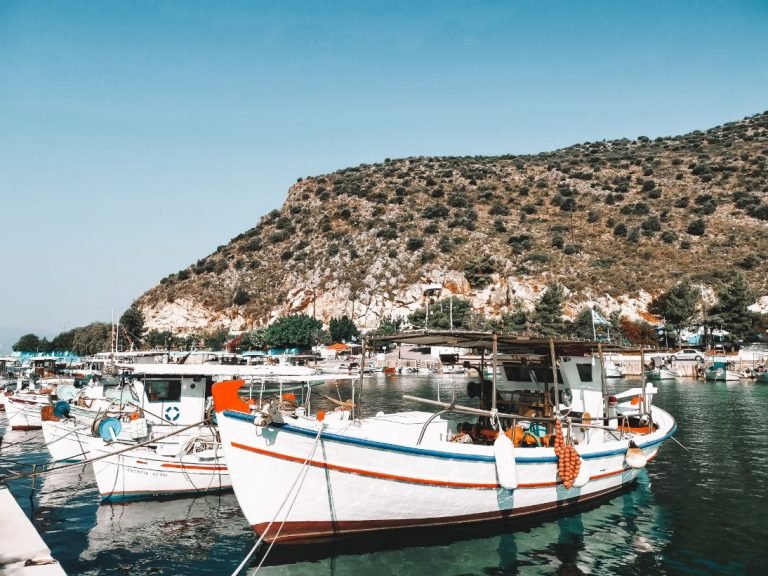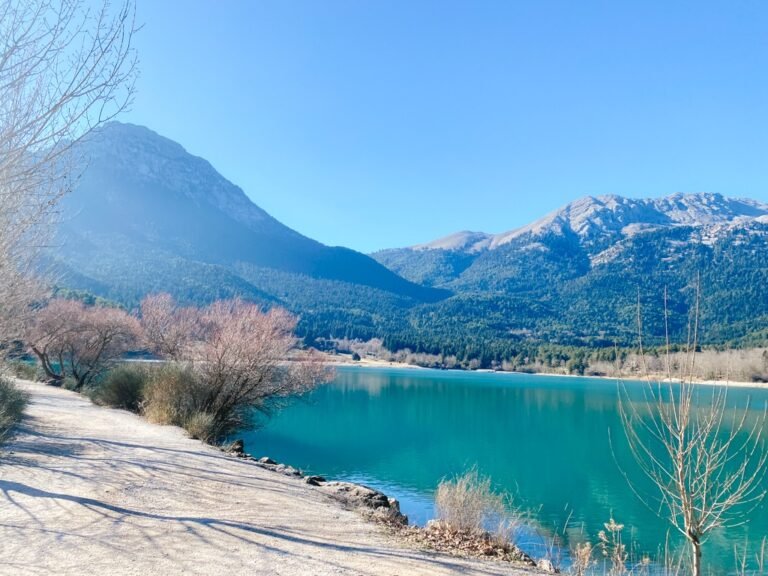This article may contain affiliate links. When you purchase something we recommend, we make a small commission. You don’t pay anything extra. 💘 For more details, check out our Terms of Use page.
I didn’t expect to walk into a small museum in a coastal town and come out raving about it. But that’s exactly what happened in Tourlida, just outside the centre of Messolonghi.
The Salt Museum caught me off guard, not just because of how beautifully done it is, but because of the heart behind it.
If you’re passing through this part of Greece, do yourself a favour and make a stop.
Actually, even if you’re not passing through, I’d argue it’s worth planning a whole road trip around.
Here’s why.
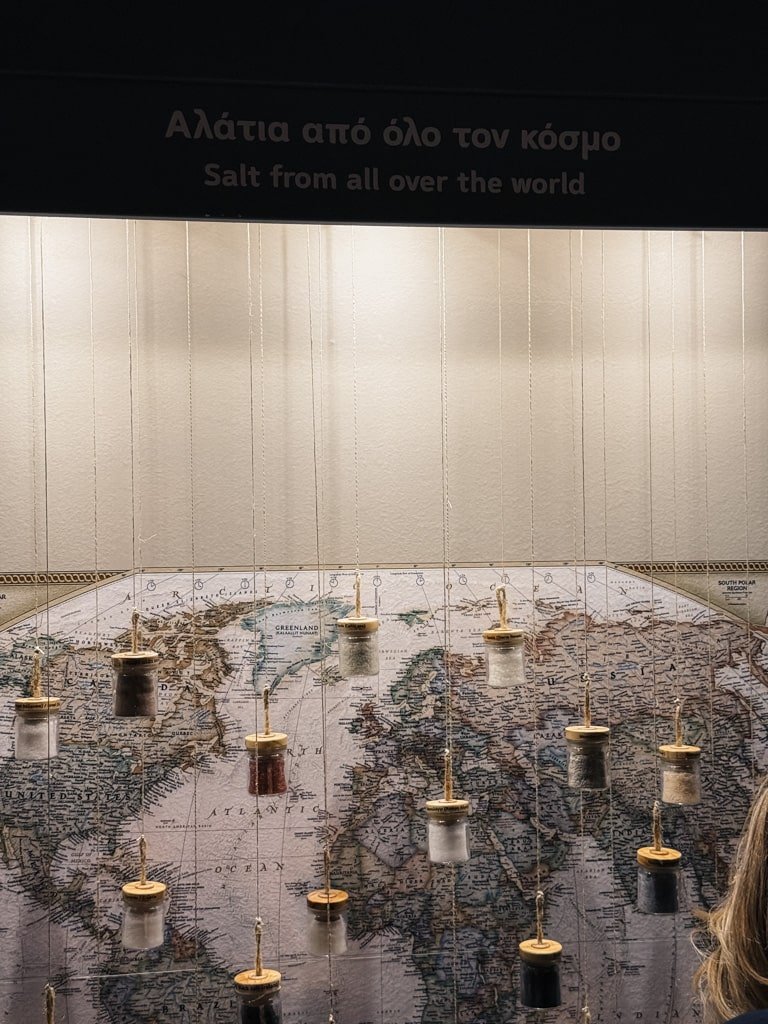
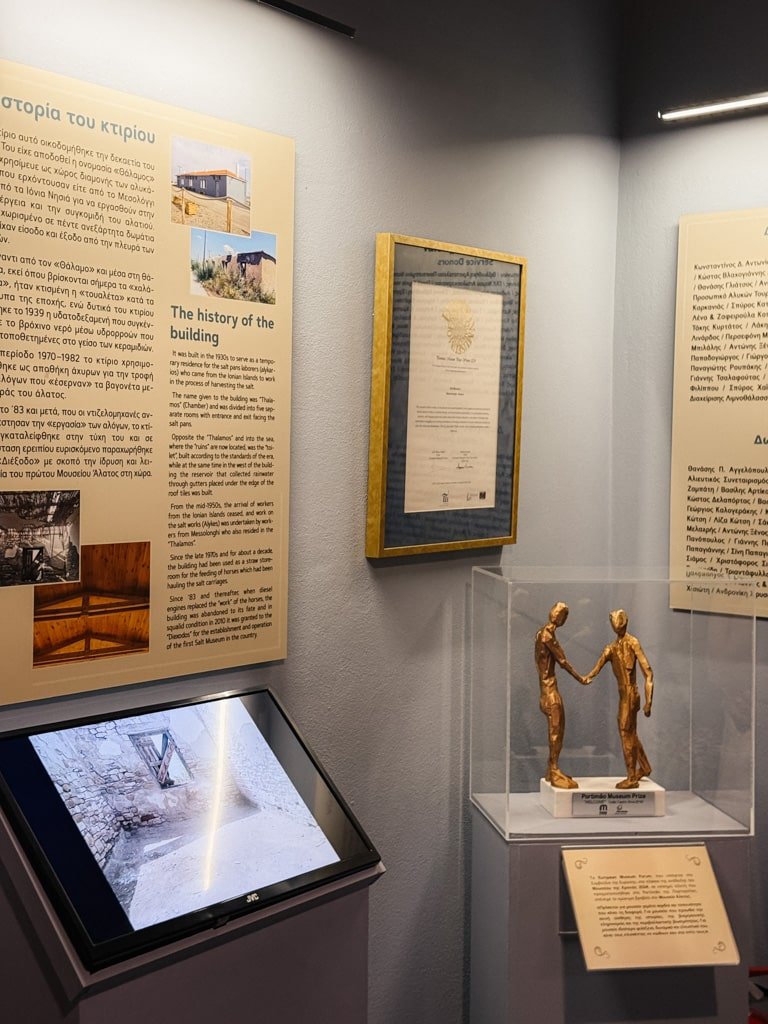
Table of Contents
ToggleWhere Is Messolonghi?
Messolonghi is a small city in western Central Greece, set right on the edge of a vast lagoon system. The closest well known city is Patras, but it’s well connected by road fro Athens and is one of the more underrated but rewarding stops in the Central Greece region.
Whether you’re coming from Athens, Patras, or en route to the Ionian Islands, it makes for a perfect road trip destination. Best suited especially for those that enjoy nature, local food, and meaningful cultural experiences.
This blog focuses specifically on the Salt Museum, but if you’re planning a longer stay, you can check out my full weekend guide here:
Why visit
I say this with zero exaggeration. This is one of the best museums I’ve visited in a long time.
It strikes that rare balance between being genuinely educational and completely fascinating. The exhibits are simple but beautifully thought out, and the storytelling draws you in whether you’re seven or seventy. It’s engaging without ever trying too hard, and it somehow manages to make the history and science of salt feel personal.
We were lucky to be guided by Ms. Despina Kanelli, whose warmth and passion are impossible to miss. Together with Mr. Nikos Kordosis, they have created something truly remarkable for the area. Even more impressive, the entire museum was created without any European or national funding. It exists purely thanks to the vision, commitment, and love of the people behind it.
It tells the story not only of Messolonghi’s salt flats, but also the global importance of salt production and how it has shaped trade, tradition, and everyday life. This isn’t just a local museum. It is a world-class tribute to one of the region’s most overlooked treasures.
Even if there wasn’t so much to love about it, the ticket is very affordable and everyone who visits gets a personal guided tour. It’s the kind of experience that stays with you long after you leave.
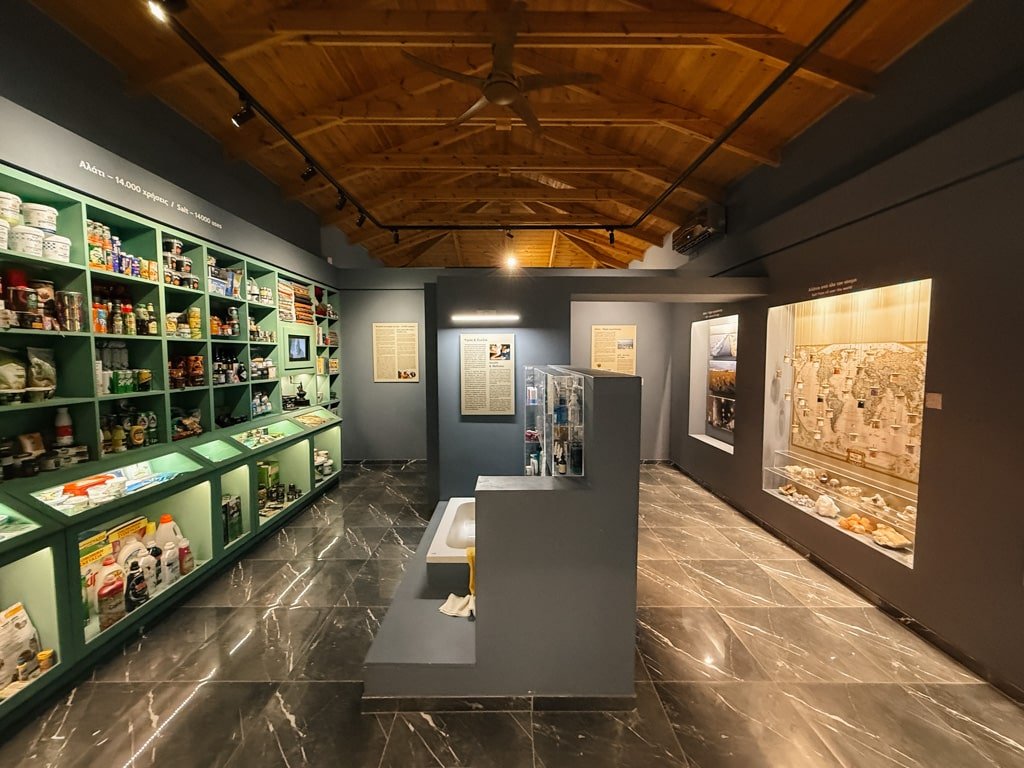
What You’ll Actually See Inside
Without giving too much away, because part of the magic is in the storytelling, the layout of the museum is smart, calm, and welcoming. You move through it almost like you’re tracing the life of salt itself, from ancient history to modern use.
There are exhibits on the origins and science of salt, how it shaped trade and economies around the world, and how it continues to shape daily life in Messolonghi. You’ll learn about traditional harvesting techniques, how salt influences the land and ecosystems around the lagoon, and what it means commercially today.
There’s a strong focus on local history, but it never feels dry or overly academic. It’s the kind of place where even if you think salt is just something that lives in your kitchen drawer, you’ll leave genuinely surprised by how much there is to know. I walked away with more knowledge than I expected and already know I’ll be coming back again.
This isn’t a one-time visit. It’s the kind of museum that keeps offering more the second time around.
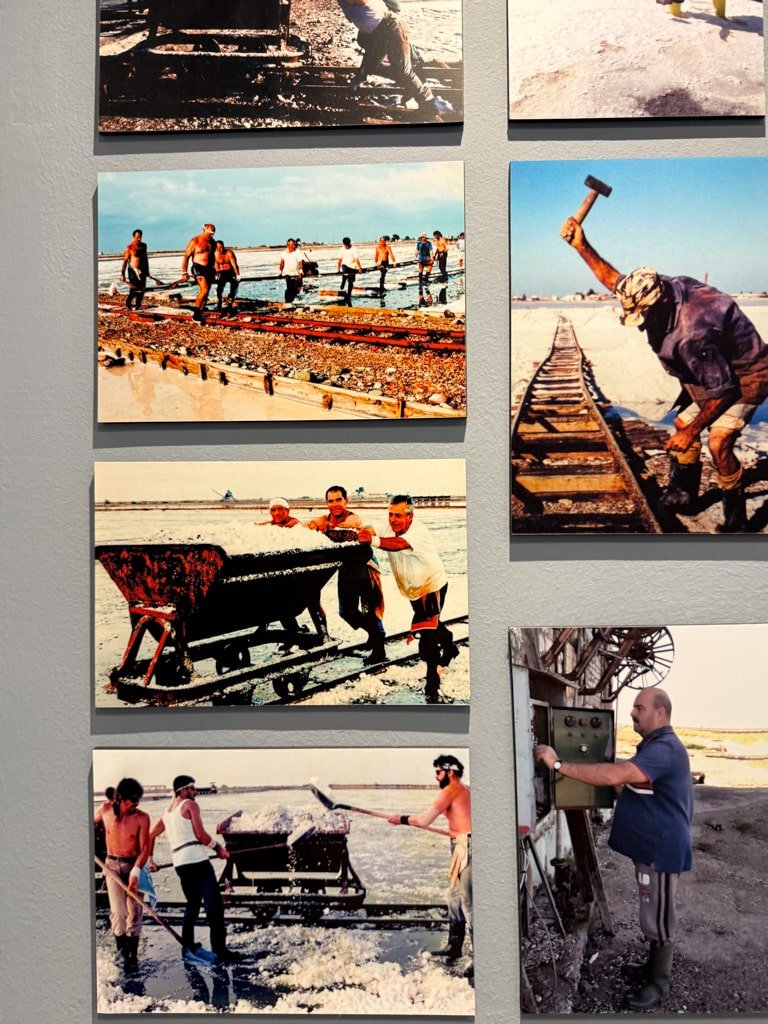
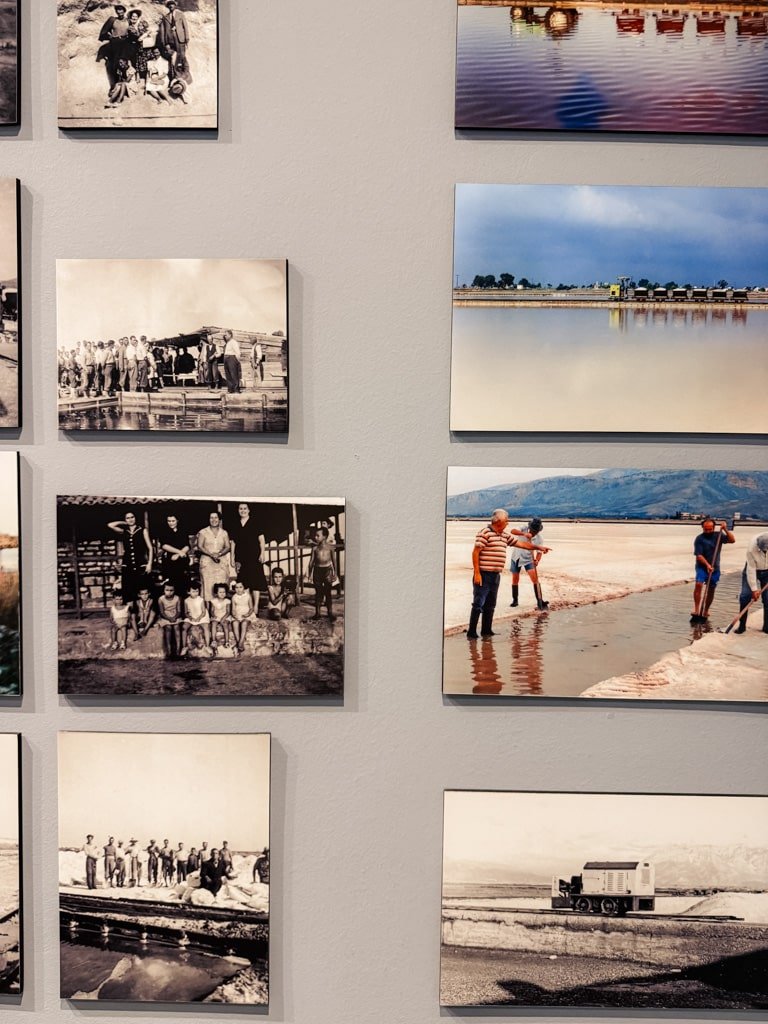
Don’t Leave Without Afrina
Before you go, stop by the small shop and grab a pouch of Afrina, Messolonghi’s very own fleur de sel. The name comes from the Greek word afros, meaning foam. It is the purest form of sea salt, formed delicately on the surface of shallow pools and collected by hand.
Afrina is the first salt to be harvested each year, and it is incredibly fine, soft, and full of subtle flavor. It has made everything I’ve put it on taste even more divine: eggs, tomatoes, sourdough with olive oil, you name it.
There are also other local products and blends available, all tied to the region’s deep relationship with the sea and its minerals.
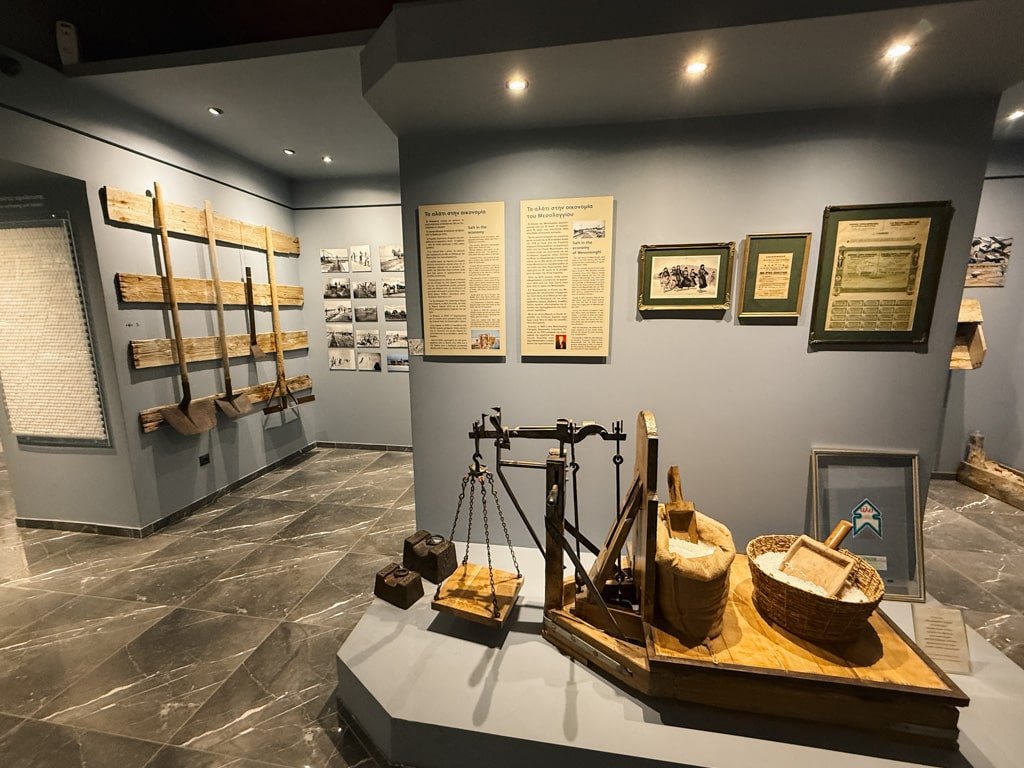
If You Go
I’ve been to a lot of museums in Greece but this one stands out because of its soul. The Salt Museum doesn’t just preserve history. It tells a story that still lives today, in the salt fields, in the families who’ve worked them for generations, and in the food that carries its flavour.
If you’re in western Greece, don’t miss it. And if you’re not, maybe now you have a reason to go.
*I was invited to experience Messolonghi together with Travel Bloggers Greece by BioEffect Greece. All views and opinions expressed are always my own.💘
ESSENTIAL INFORMATION
Must Know When Visiting Greece
- Emergency: Dial 112 for all emergencies. For police, dial 100. For ambulance 166. For fire dial 199.
- Language: English is widely spoken in most tourist areas. Common phrases to learn are “Kalimera” (Good morning), “Yia” (Hello and Bye – informal), and “Efharisto” (Thank you).
- Water: Tap water is safe in Athens, mainland Greece and a small number of islands. Always ask beforehand.
- Driving: Right-hand side, international driving permit recommended. Book your rental car with Discover Cars for the best rates and comparisons across all major and local companies.
- Accommodation: Booking.com for the most options on hotels, apartments and hostels. Free cancellation in a lot of places and no need to pre-pay. Great for their rewards points system.
- Islands: There are a lot of islands, spread out around the country. Start with a map or ferry service to get an idea of travel times. Ferry Scanner is the best for ferry bookings to the Greek islands.
- Activities: From cultural sights to day trips, food tours and city guides, use Get Your Guide.
- Public Transport: For Athens, use the Athens Metro. If you are not renting a car, use Trains (Hellenic Train) or KTEL (Public Buses) services.
- Domestic Airlines: The main airlines for air travel are Aegean Airlines and Sky Express. I recommend Aegean Airlines and its rewards program.
- Taxi: Always use a taxi app, instead of flagging down a taxi from the road. Use FREE Now (formerly BEAT).
- Culture: A siesta nap is still common in less touristy areas. This also means businesses will close between 2 PM – 5 PM. Except for hospitality businesses, everything is closed on Sundays.


